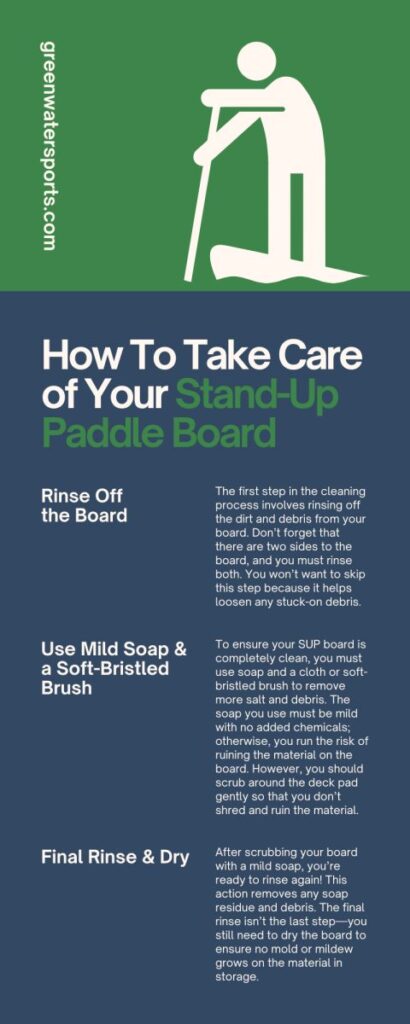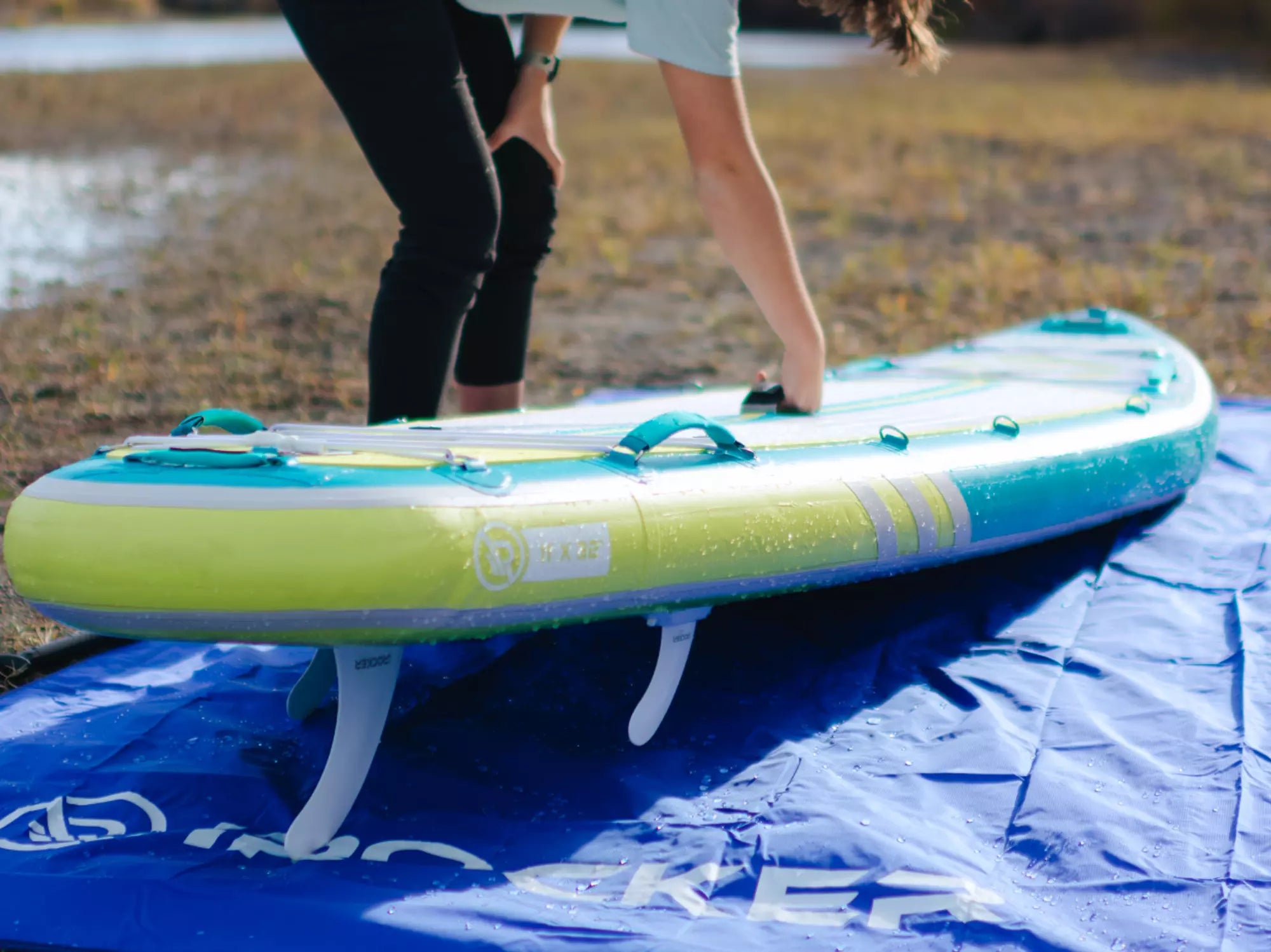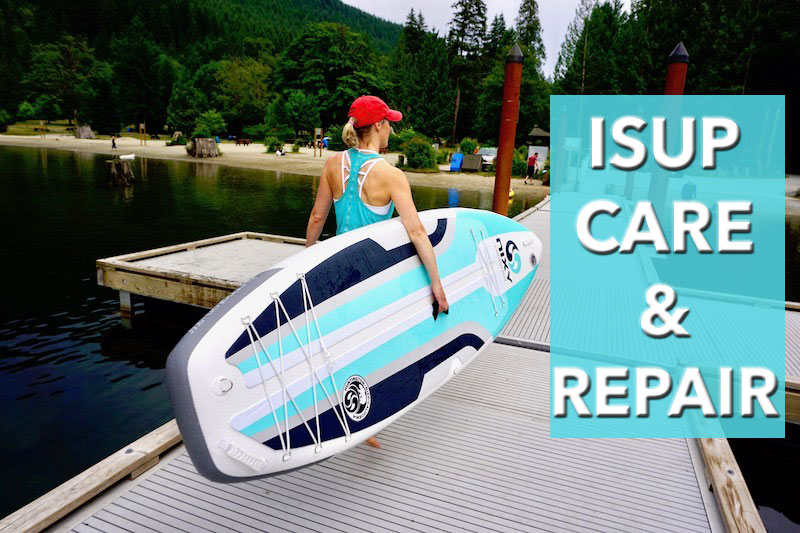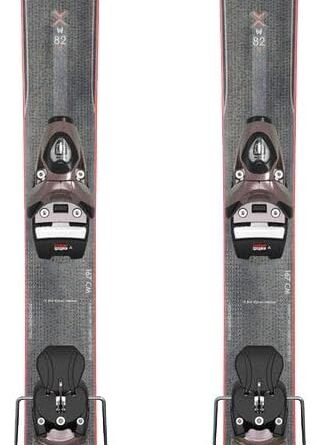
Maintaining the cleanliness and proper storage of your stand-up paddleboard is essential for its longevity and performance. In this article, you will discover a range of helpful tips and techniques that will ensure your paddleboard remains in excellent condition. From cleaning steps to storage recommendations, we’ve got you covered to make sure your paddleboard is ready for your next adventure. So, let’s get started and learn how to keep your stand-up paddleboard looking as good as new!

This image is property of greenwatersports.com.
Cleaning Your Stand-Up Paddleboard
Whether you’ve just finished a fun paddle session or your paddleboard has been sitting in storage collecting dust, it’s important to regularly clean and maintain your stand-up paddleboard (SUP). Not only will proper cleaning help prolong the lifespan of your board, but it will also enhance your overall paddling experience. So let’s dive into the step-by-step process of cleaning your SUP.
Rinsing the Board
The first step in cleaning your SUP is to give it a good rinse. Start by finding a suitable location, such as your backyard or a nearby wash area, where you can place your board securely. Use a hose or a bucket of water to thoroughly rinse off any saltwater, sand, or debris from the board’s surface. Make sure to get into all the nooks and crannies, including the fin boxes and leash plug.
Scrubbing the Board
To remove any stubborn dirt or grime, it’s recommended to scrub your paddleboard gently. Fill a bucket with warm water and add a small amount of mild soap or SUP-specific cleaner. Using a soft sponge or brush, lightly scrub the entire surface of the board in a circular motion. Be careful not to scrub too hard, as this could damage the board’s outer layer. Pay extra attention to areas that are particularly dirty, such as the deck pad and rails.
Cleaning the Deck Pad
The deck pad is an essential part of your SUP, providing traction and stability while paddling. To keep it clean and in good condition, it’s important to give it some extra attention during the cleaning process. Mix a small amount of soap or cleaner with a bucket of warm water and use a soft brush or sponge to gently scrub the deck pad. Avoid using abrasive materials or harsh chemicals that could damage the surface or affect its grip.
Removing Stubborn Stains
Sometimes, despite your best efforts, your SUP may still end up with stubborn stains that are difficult to remove. For these cases, there are a few tricks you can try. One method is using a paste made from baking soda and water. Apply the paste to the stain and let it sit for a few minutes before gently scrubbing. Another option is using vinegar or lemon juice diluted with water. Apply the solution to the stain and let it sit for a while before scrubbing. Remember to rinse the board thoroughly after using any cleaning solutions.
Drying the Board
After cleaning your SUP, it’s crucial to ensure it is dried properly before storing or using it again. Wipe down the entire board with a clean towel to remove excess water. If possible, prop the board up vertically or place it on a rack to allow air to circulate around it. This will help prevent any moisture from getting trapped and potentially causing damage to the board. Make sure the board is completely dry before moving on to the next step.
Cleaning the Paddle
Your paddle is just as important as your paddleboard, so it deserves some proper cleaning and care as well. Here’s how to keep your paddle in tip-top shape:
Rinsing the Paddle
Start by rinsing off your paddle with warm water to remove any dirt, sand, or saltwater residue. Pay attention to the blade, shaft, and handle, making sure to get into all the crevices.
Removing Dirt and Debris
Once the paddle has been rinsed, use a soft brush or sponge to gently scrub away any dirt or debris on the blade, shaft, and handle. Avoid using abrasive materials that could scratch or damage the paddle’s surface.
Cleaning the Handle
The handle of your paddle is the part you have the most contact with, so it’s important to keep it clean. Mix a small amount of mild soap or paddleboard cleaner with warm water and use a sponge or cloth to wipe down the handle. Rinse thoroughly afterward to remove any soap residue.
Drying the Paddle
Similar to the SUP, it’s crucial to allow your paddle to dry properly before storing or using it again. Wipe down the entire paddle with a clean towel, removing any excess water. If possible, prop the paddle up vertically or lay it flat on a towel to dry completely.

This image is property of sup-chick.com.
Cleaning the Leash
The leash is an essential safety accessory that keeps you connected to your paddleboard. To ensure its functionality and longevity, regular cleaning is necessary. Follow these steps to clean your leash:
Removing Sand and Dirt
Start by removing any sand or dirt from the leash by giving it a gentle shake or lightly brushing it with your hands. Be careful not to tug on the leash or handle it too roughly.
Cleaning the Velcro
The Velcro on the leash can sometimes accumulate dirt, making it less effective. To clean it, use a soft brush or toothbrush to gently scrub the Velcro, removing any dirt or debris. Avoid using excessive force, as it could damage the Velcro.
Drying the Leash
After cleaning, make sure to thoroughly dry the leash. Wipe it down with a clean towel or hang it up to air dry. It’s important to store the leash only when it is completely dry to prevent any mold or mildew growth.

This image is property of irockersup.com.
Storing Your Stand-Up Paddleboard
Proper storage is key to maintaining the longevity and performance of your stand-up paddleboard. Here are some important guidelines to follow:
Choosing the Right Storage Location
When it comes to storing your SUP, find a location that is dry, cool, and away from direct sunlight. A garage, shed, or dedicated paddleboard storage rack are all great options. Avoid storing the board in areas with extreme temperatures or high humidity, as these conditions can potentially damage the board’s materials.
Using a Protective Cover
To provide extra protection for your paddleboard, consider using a protective cover. This will help shield the board from dust, UV rays, and potential scratches. Choose a cover specifically designed for SUPs that fits your board’s dimensions.
Storing the Board Horizontally
When storing your SUP, it’s best to store it horizontally on a designated rack or padded surface. This helps distribute the weight of the board evenly and prevents any warping or damage over time. Avoid leaning the board against a wall or leaving it lying flat on a hard surface.
Avoiding Excessive Pressure
Be mindful not to stack heavy objects or put excessive pressure on your stored paddleboard. This can potentially cause deformities or stress points on the board. Keep the storage area organized and free from any objects that could accidentally fall on or damage the board.
Avoiding Extreme Temperatures
Extreme heat or cold can adversely affect the materials of your SUP. Therefore, avoid storing your board in areas that are subject to extreme temperature fluctuations, such as near heating or cooling systems. Optimal temperature ranges for storage are typically between 50-85°F (10-30°C).
Storing the Paddle
When it comes to paddle storage, ideally, keep it alongside your paddleboard. Store the paddle horizontally or vertically in a protected space to prevent any damage to the blade or handle. If using a vertical stand, make sure the paddle is secure and won’t accidentally fall or get knocked over.
Storing the Leash
Lastly, store your leash alongside your paddleboard and paddle. Keep it in a tangle-free state, ensuring it is easily accessible for your next paddle session. Avoid any sharp or abrasive objects that could potentially damage the leash.

This image is property of isupworld.com.
Preventative Maintenance
Regular maintenance is key to ensuring your SUP stays in top condition. Here are some essential preventative maintenance tips to keep in mind:
Inspecting the Board Regularly
Make it a habit to inspect your paddleboard regularly for any signs of damage, wear, or loose parts. Look for cracks, dings, or delaminations on the outer surface and check the fin system for any issues. Catching minor damage early on can prevent it from turning into a larger problem later.
Repairing Any Damage
If you do notice any damage during your inspection, it’s important to address it promptly. Small cracks or dings can often be repaired with the appropriate materials and techniques. Reach out to a professional or consult the manufacturer’s guide for proper repair instructions.
Checking and Replacing Fins
Fins play a crucial role in your paddleboard’s performance, so it’s important to regularly check them for any signs of wear or damage. Inspect the fin boxes, fin screws, and fin themselves. If any part is damaged or not functioning correctly, replace it promptly to maintain optimal paddling performance.
Maintaining the Deck Pad
The deck pad provides you with grip and traction, so keeping it in good condition is important for a safe and comfortable paddling experience. Inspect the deck pad regularly for any signs of wear, peeling, or damage. If necessary, consider replacing it to ensure the best possible grip on your paddleboard.
By following these cleaning, storing, and maintenance tips, you can prolong the life of your stand-up paddleboard and enjoy countless memorable paddling adventures. Remember, a clean and well-maintained SUP is a happy SUP, and a happy SUP leads to a happy paddler! So take care of your board, and it will take care of you. Happy paddling!

This image is property of i.ytimg.com.






